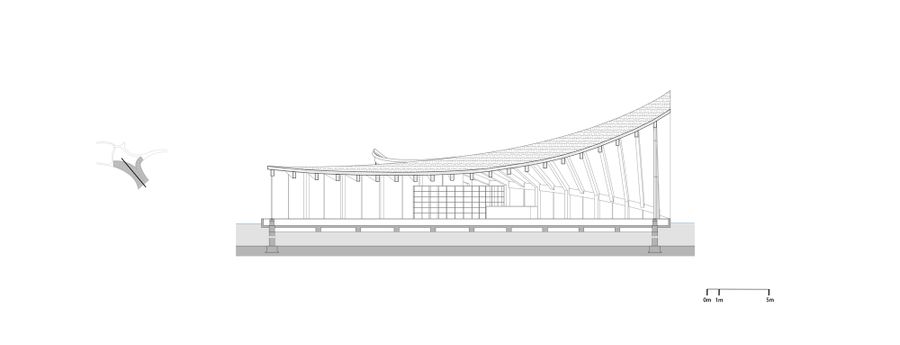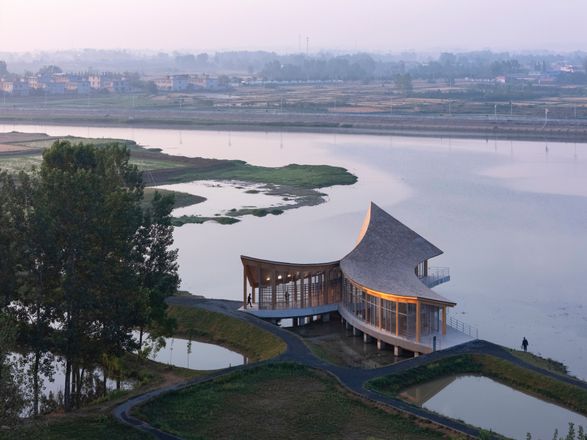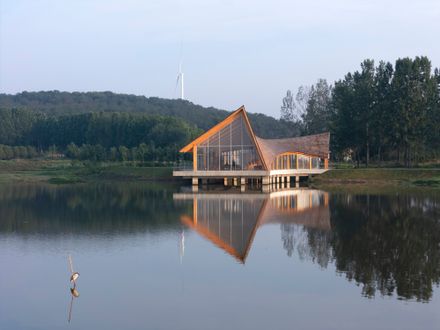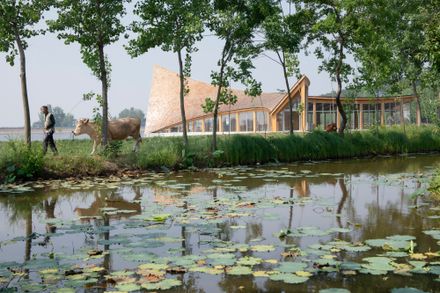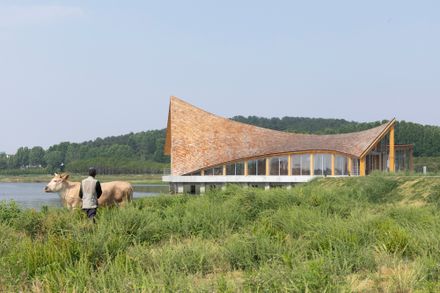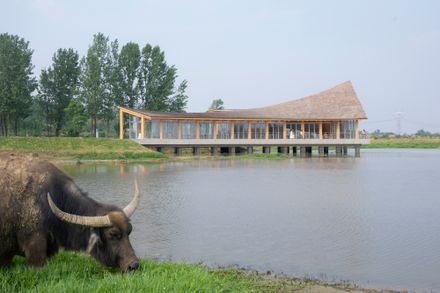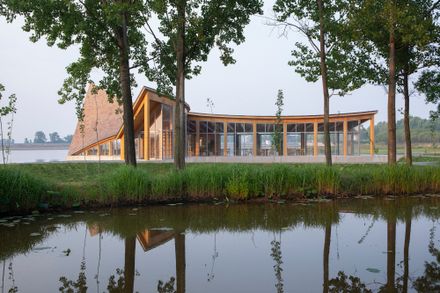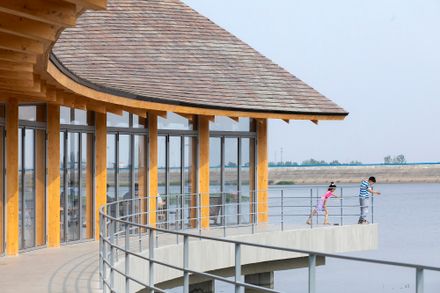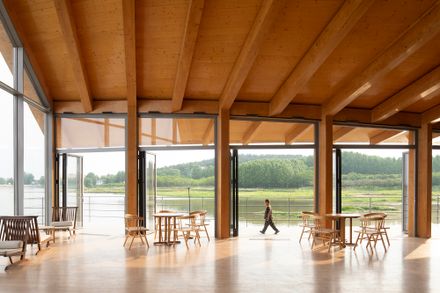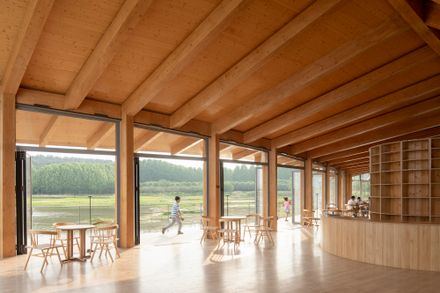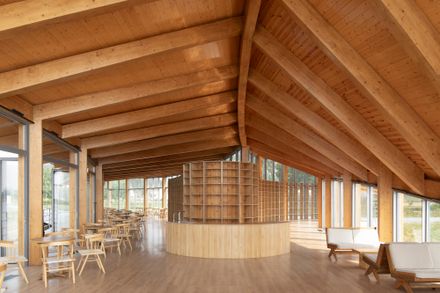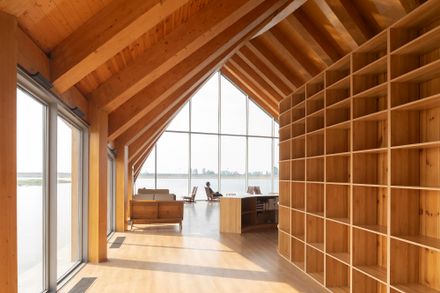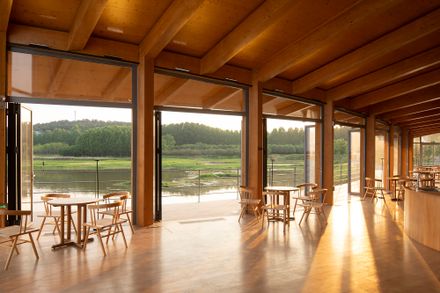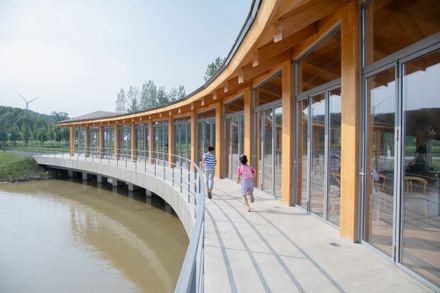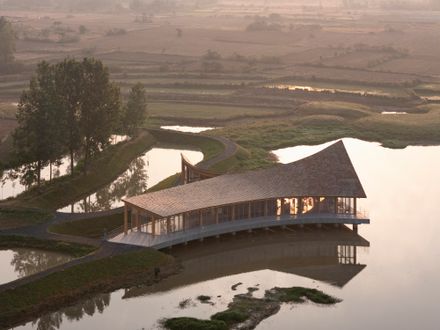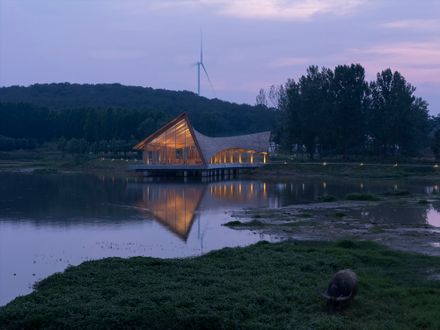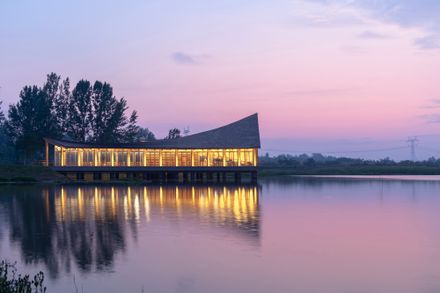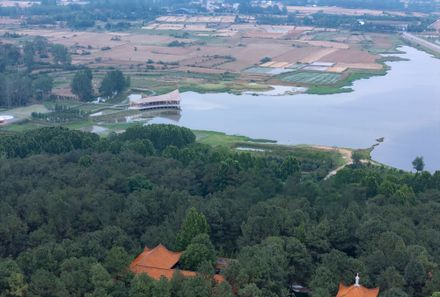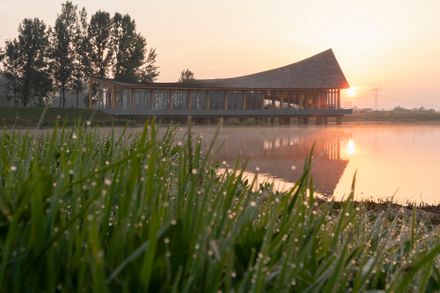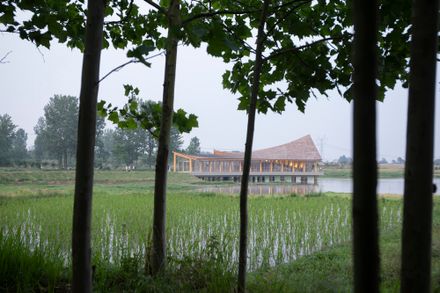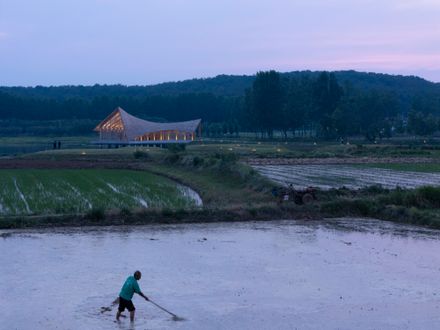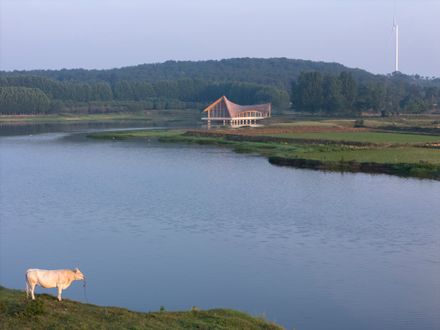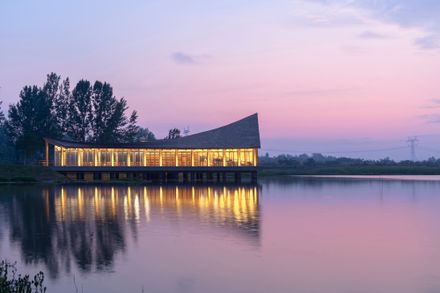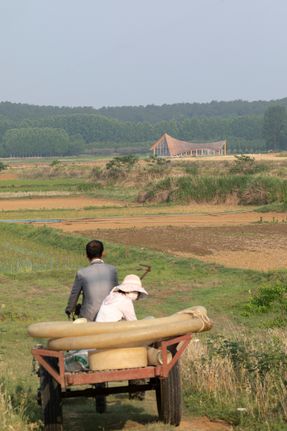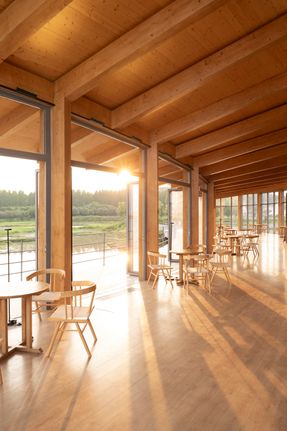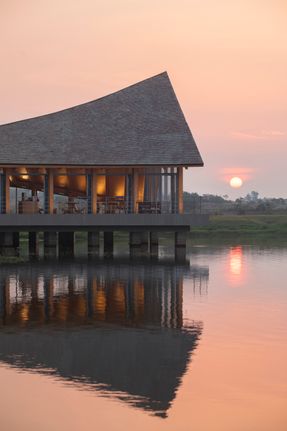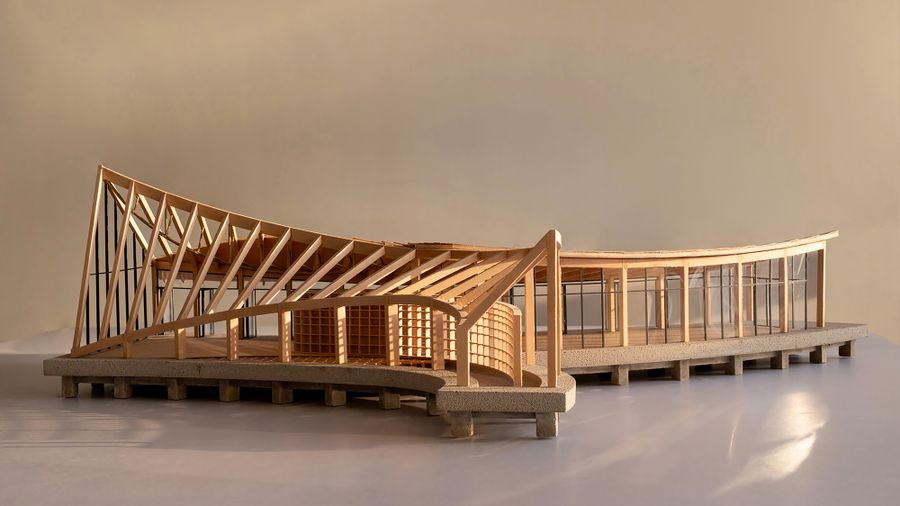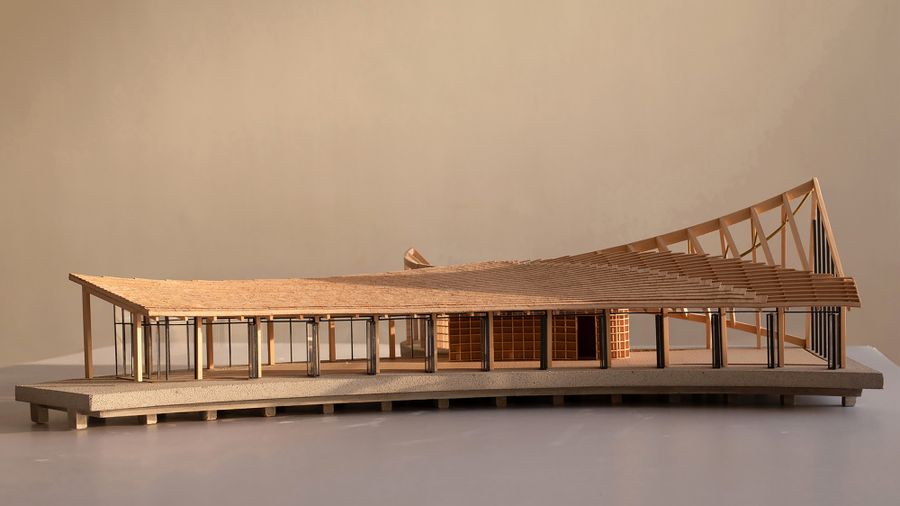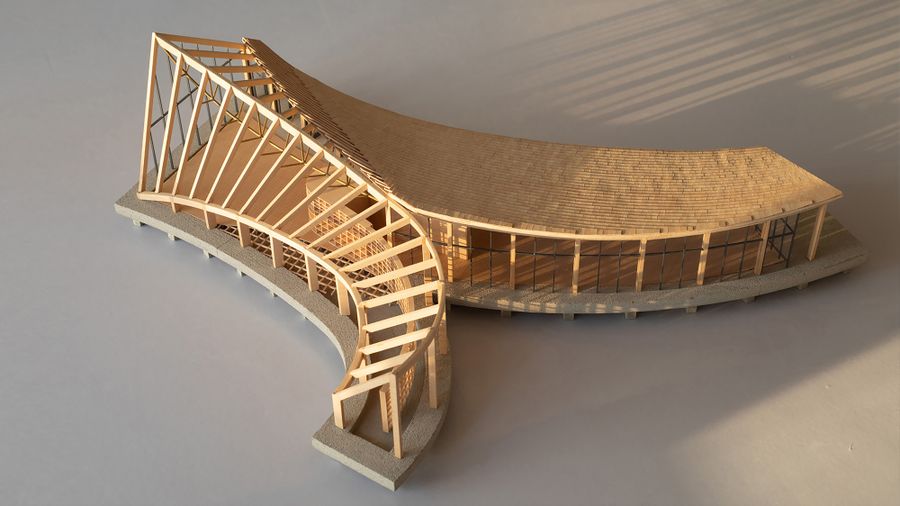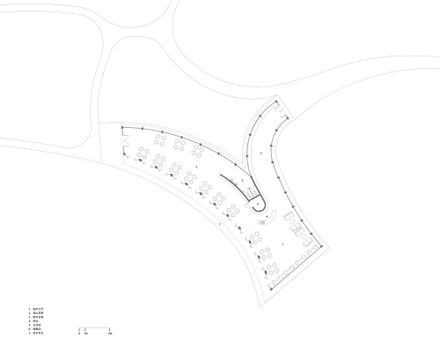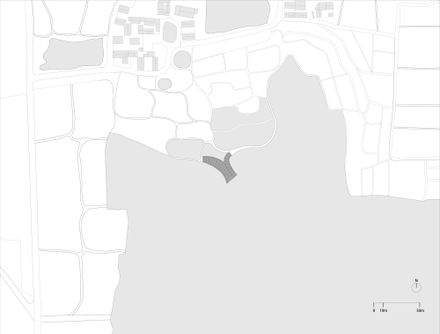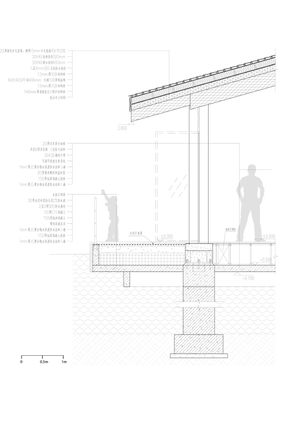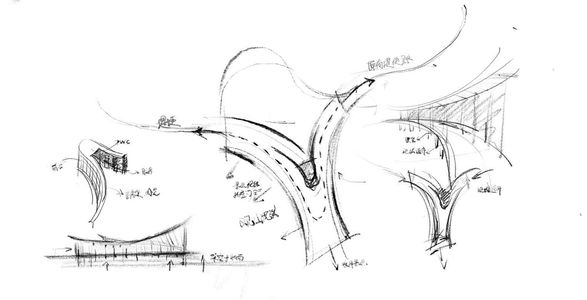
The Driftwood Village Center
ARCHITECTS
Primary Architects
LEAD ARCHITECTS
Xiang Huang, Songyan Mao
DESIGN TEAM
Xiang Huang, Songyan Mao,Cong Liu, Zhiyan Lin, Le Chang, Dawei Wu, Qi Lu, Zilin Tian
CLIENT
Government of Zhashan Township, Xinyang City
PHOTOGRAPHS
Arch-Exist
AREA
425 m²
YEAR
2024
LOCATION
Xinyang, China
CATEGORY
Community Center
Text description provided by the architects.
The Driftwood Village Center is located on the bank of a reservoir in Liugang Village, Xinyang, forming a spatial layout of "three-sided scenery."
As a source of agricultural irrigation, the reservoir experiences seasonal fluctuations in water level due to farming needs. The daily agrarian life of the villagers revolves around this water body.
Designed as a shared space for villagers during the farming off-season, the Village Center includes a tea room, reading lounge, and a villagers' assembly hall.
The spatial arrangement is conceived in response to the agricultural environment and the periodic changes in reservoir water levels.
Through its form, the architecture establishes a dialogue with the surrounding mountains and farmland, becoming a medium that connects agrarian life with the natural landscape.
The "grain of the fields" shaped by fine farming practices is the site's most distinctive feature. The architecture integrates humbly into the agricultural landscape, preserving existing field ridges and native vegetation.
A stretch of the dike path along the reservoir was chosen as the cue for the architectural circulation, allowing the floor plan to naturally extend from both ends, making the building an organic continuation of the dike road.
The main structure is timber-framed with steel bolt connections, using gable frame systems with pitched roofs.
Four hyperbolic main beams serve as the roof's key structural elements, complemented by evenly spaced secondary beams.
The curved form follows the meandering dike, responding to the natural terrain and creating structural self-stability. The interior is a column-free space, minimizing spatial interruption.
The curved curtain walls on both ends of the building face Phoenix Mountain and the reservoir respectively, drawing the exterior landscape into the interior through open sightlines.
Entrances align with both ends of the dike; before entering, one passes through a lowered eave-covered transitional space.
As visitors move inside, the two corridors gradually rise and converge into a column-free, full-height hall.
As one walks through the space, the mountains, farmlands, and reservoir are continuously reframed through architectural openings, offering ever-changing vistas.
On the west side, folding doors can be fully opened to connect with the outdoor terrace, blurring the boundary between inside and outside, allowing light and wind to flow freely through the space.
